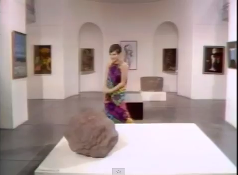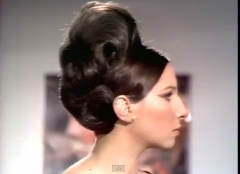
In Color Me Barbra, a 1966 CBS television special, Barbra Streisand is filmed on location in the modern-art galleries of the Philadelphia Museum of Art. She belts out a rousing song, in which she yearns for a “brand new place,” where no one will tell her “what to be or how to be it, someplace where I can just be me.” Her exuberance suggests that she has found what she was looking for, her place of self-expression, in the realm of modern art.
This scene represents a meeting of two powerful cultural forces: television and modern art. In the two decades leading up to Color Me Barbra, the pioneers of American television—many, like Streisand, young and aesthetically adventurous—had adopted modernism as a source of inspiration.
Early television was limited by corporate interests and cultural and social restrictions and prejudices. However, its initial rollout in the 1940s and early 1950s in largely urban areas and its lack of longstanding conventions made the new medium particularly appealing to pioneers. Like Streisand, they were searching for a place to rise above the status quo, or at least to expand its boundaries.
Television emerged as a dominant medium of communication in the United States in the period from the late 1940s through the early 1970s. Revolution of the Eye explores the ways modern art—the epitome of cultural experimentation and creativity—served as an influence and a model for shaping the new medium.
Maurice Berger
Curator
(Above) installation view, Revolution of the Eye, The Jewish Museum, New York, May 2015. Photo by David Heald, courtesy of the Jewish Museum



Screen captures, “Gotta Move,” from Color Me Barbra, CBS, 1966
WATCH: Barbra Streisand in “Gotta Move,” from Color Me Barbra, CBS, 1966